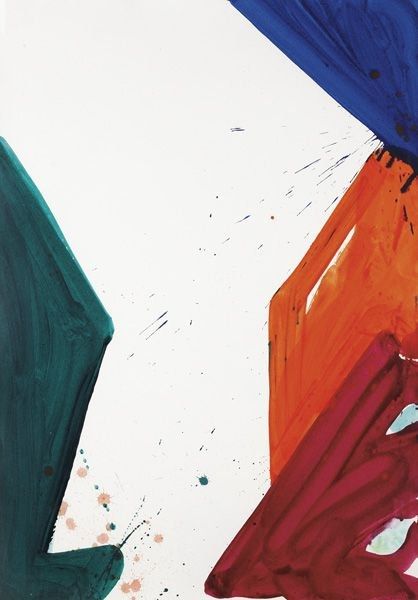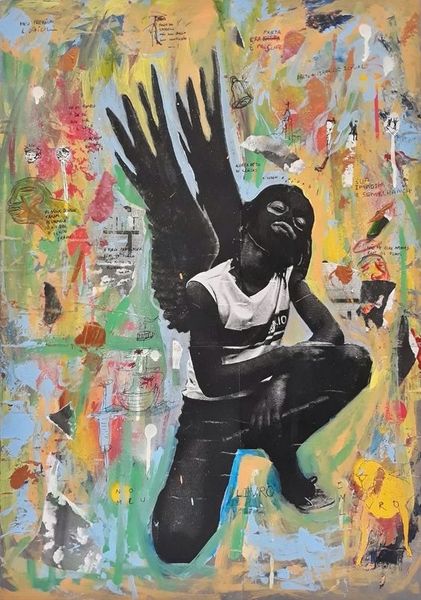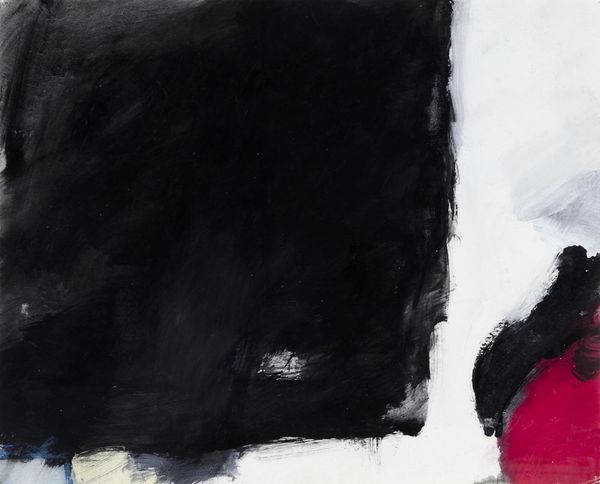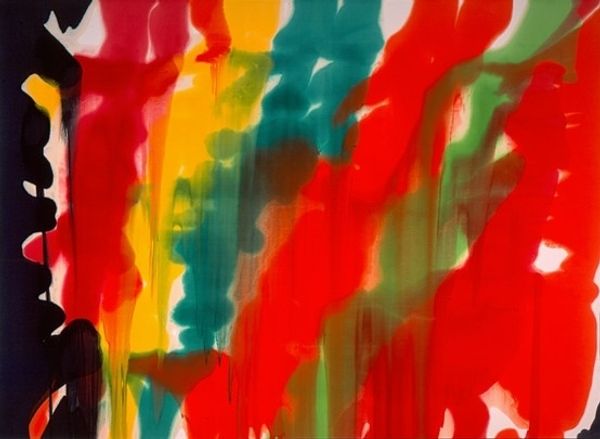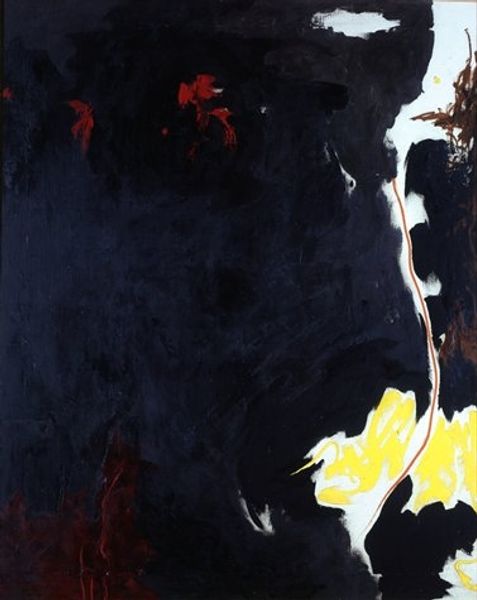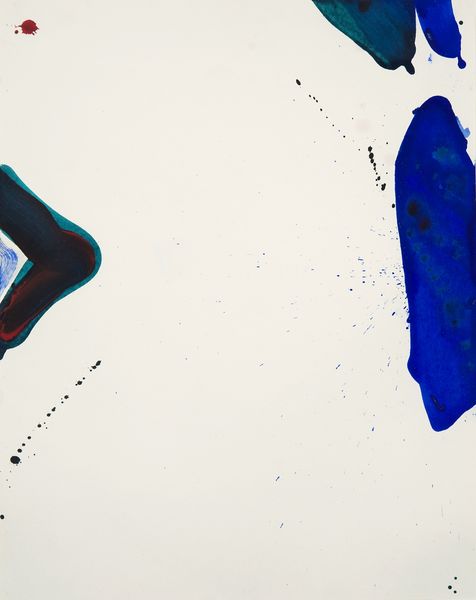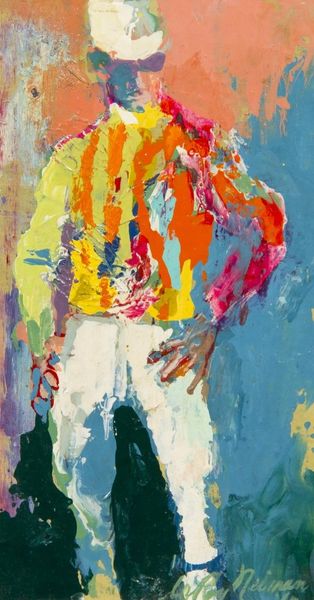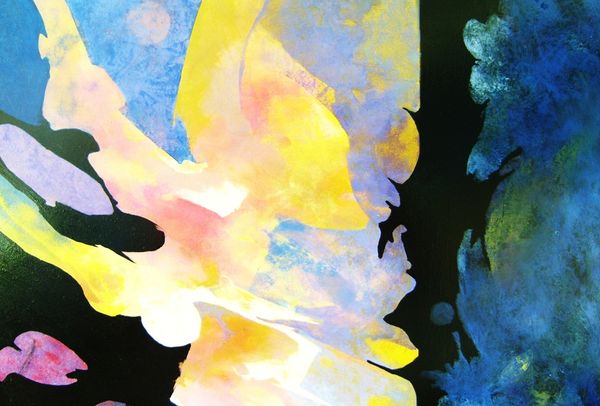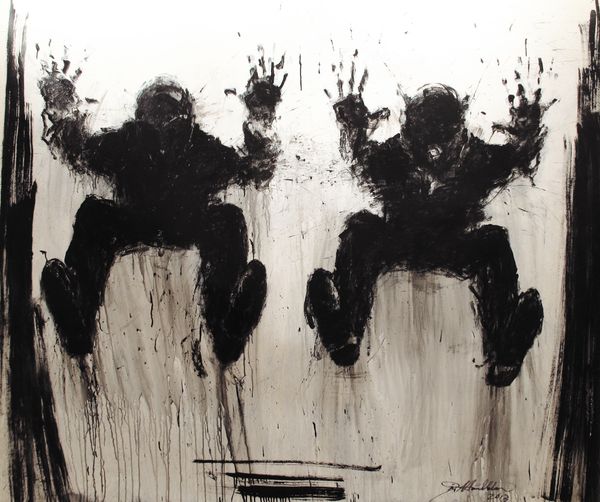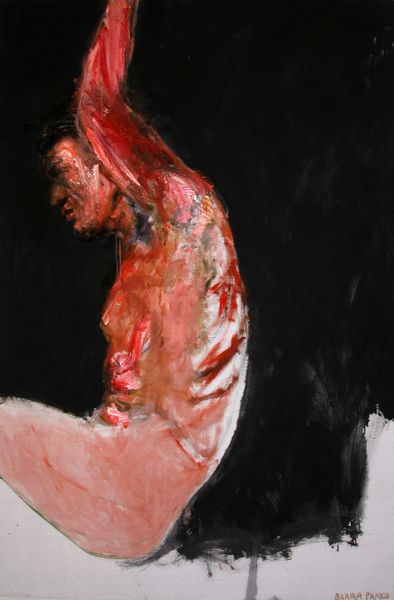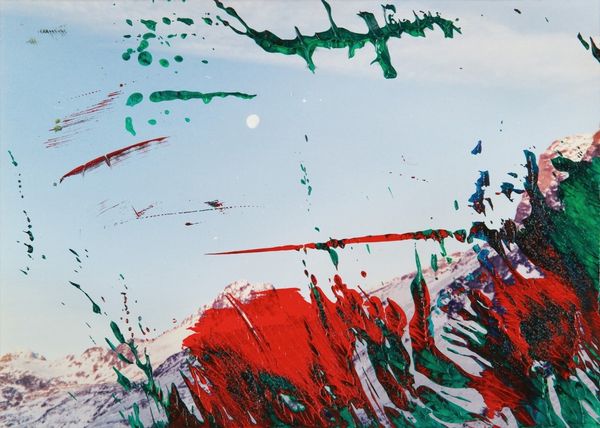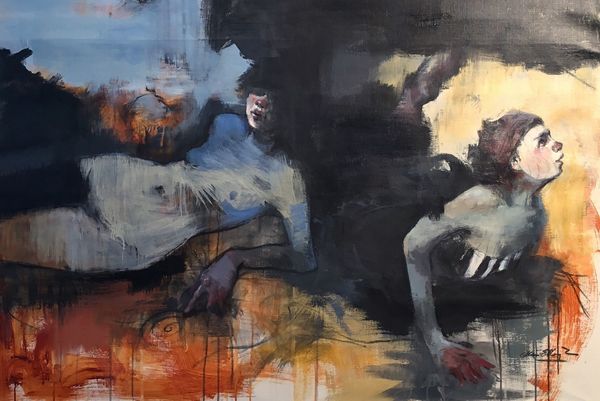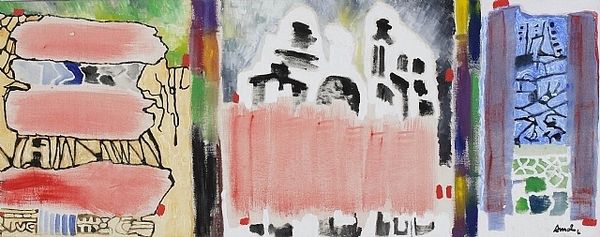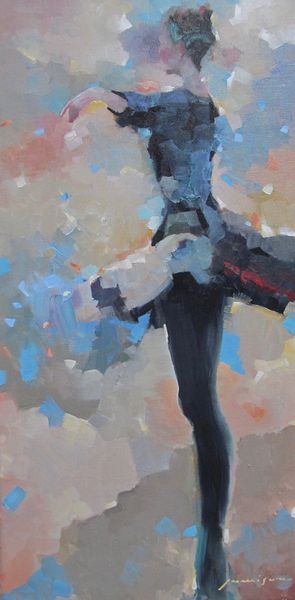
painting, acrylic-paint, mural
#
public art
#
figurative
#
contemporary
#
street-art
#
painting
#
graffiti art
#
street art
#
acrylic-paint
#
figuration
#
mural art
#
graffiti-art
#
mural
Copyright: Modern Artists: Artvee
Curator: Welcome. Here we have Timur Akhriev’s striking acrylic mural, "Border," created in 2015. It's a strong example of contemporary figurative street art. What’s your initial reaction to it? Editor: The sharp division is immediate. A vibrant pink contrasts dramatically with a somber blue, creating a really unsettling atmosphere. The scale makes it imposing, drawing you right in. Curator: The piece definitely plays with binaries. Akhriev often engages with the public sphere through his art. Given the title, it seems quite pointed, no? The clear segregation established by these clashing color fields sets the stage for a political commentary. Editor: Absolutely. On one side we have this lone figure, and on the other, a crowd represented by silhouettes of outstretched hands, seemingly yearning, perhaps pleading, rendered against what looks like rain or tears on the blue backdrop. Curator: Note also how the artist employs graffiti art styles in rendering "Border" alongside clean, intentional portraiture. There's a visible juxtaposition in medium, from painting to graffiti, suggesting a division across society. The gesture of the man, too, becomes paramount. Editor: The pointed finger? Yes. It acts as an accusatory, almost violent directive that increases the work's palpable tension. It forces a dialogue, even confrontation, about who is kept out, and why. This kind of symbolism lends power to discussions of marginalized groups within society. Curator: Murals hold immense social and historical significance. It encourages people to confront ideas about identity and their civic responsibilities in a format that feels, if anything, democratic. I appreciate how Akhriev compels the audience to critically look at borders both as physical boundaries, and societal constructs that define inclusion and exclusion. Editor: Ultimately, it pushes viewers to analyze systems, prompting deeper thought about the "us versus them" mentality so prevalent in contemporary society. For me, the artwork stands as a stark indictment of contemporary societal divisions. Curator: Agreed. A valuable encounter, reflecting our shared present. Editor: Indeed. A somber and affecting statement that sticks with you.
Comments
No comments
Be the first to comment and join the conversation on the ultimate creative platform.
